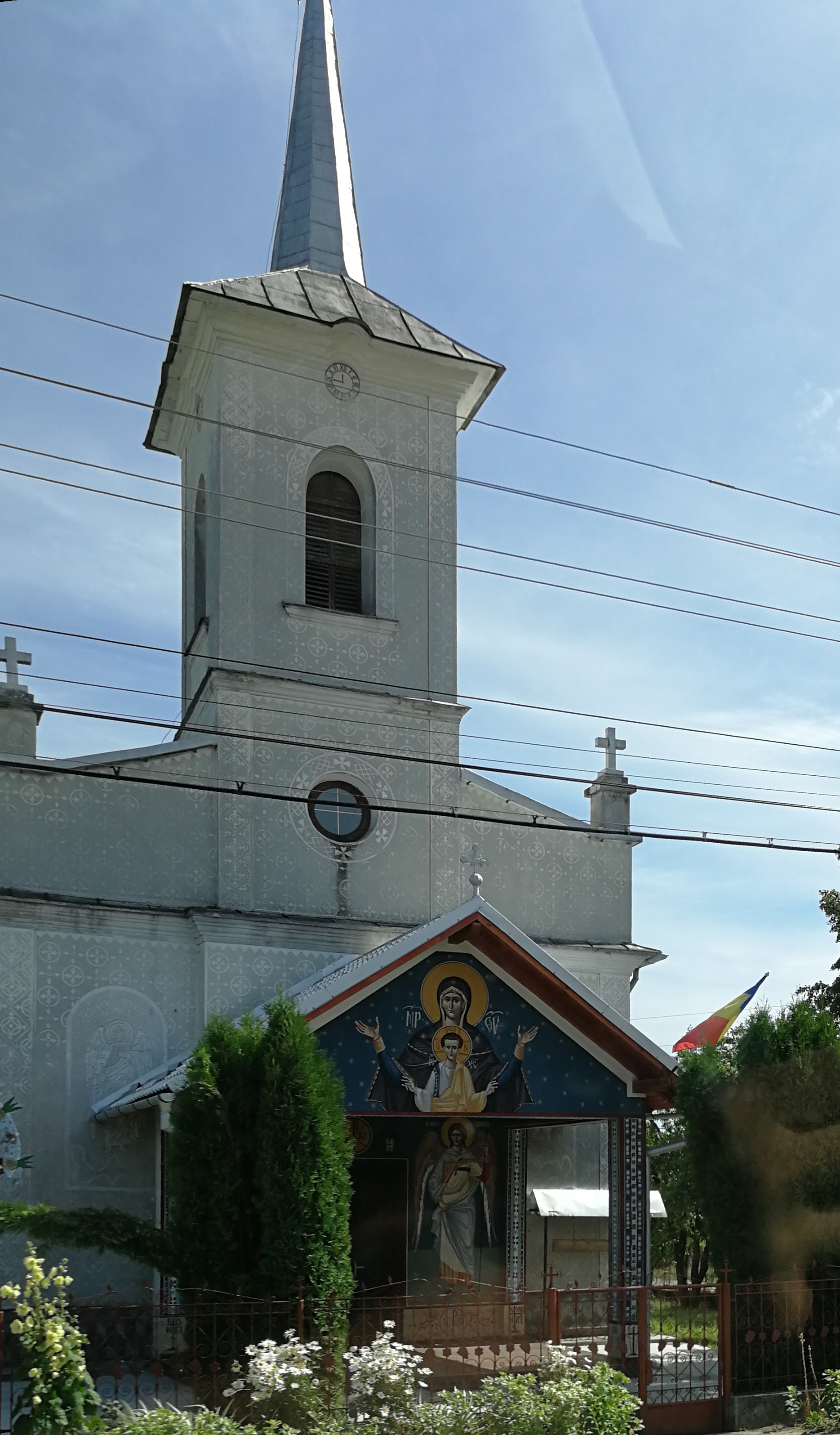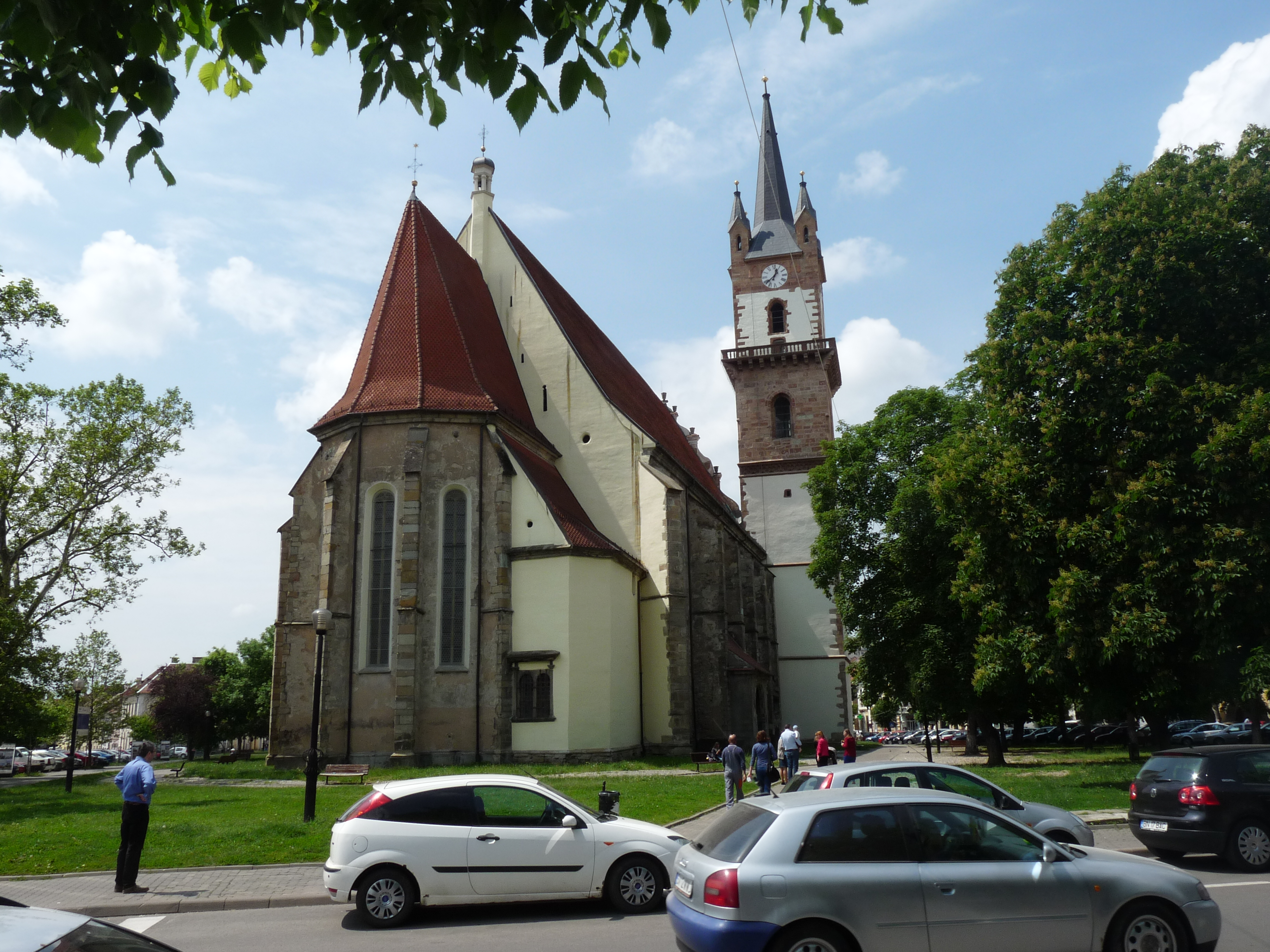|
Petru Rareș, Bistrița-Năsăud
Petru Rareș is a commune in Bistrița-Năsăud County, Transylvania, Romania. It is composed of two villages, Bața (''Baca'') and Reteag (the commune centre; hu, Retteg; german: Retteneck). It also included Ciceu-Mihăiești, Ciceu-Corabia and Lelești villages until 2005, when these were split off to form Ciceu-Mihăiești Commune. Named after Petru Rareș (voivode of Moldavia in the 16th century), the commune lies on the Transylvanian Plateau, on the right bank of the Someșul Mare River. It is located in the western part of the county, on the border with Cluj County, at a distance of from the town of Beclean and from the county seat, Bistrița; the city of Dej is 14 km to the west, in Cluj County. At the 2011 census, Petru Rareș had a population of 3,351. According to the census, 53.21% of inhabitants are Romanians, 25.75% Roma, and 17.1% Hungarians Hungarians, also known as Magyars ( ; hu, magyarok ), are a nation and ethnic group native to Hungary () and h ... [...More Info...] [...Related Items...] OR: [Wikipedia] [Google] [Baidu] |
Bistrița-Năsăud County
Bistrița-Năsăud () is a county (județ) of Romania, in Transylvania, with its capital city at Bistrița. Name In Hungarian language, Hungarian, it is known as ''Beszterce-Naszód megye'', and in German language, German as ''Kreis Bistritz-Nassod''. The name is identical with the county created in 1876, Beszterce-Naszód County ( ro, Comitatul Bistriţa-Năsăud) in the Kingdom of Hungary (the county was recreated in 1940 after the Second Vienna Award, as it became part of Hungary again). Except these, as part of Romania, until 1925 the former administrative organizations were kept when a new county system was introduced. Between 1925–1940 and 1945–1950, most of its territory belonged to the Năsăud County, with smaller parts belonging to the Mureș County, Mureș, Cluj County, Cluj, and Someș County, Someș counties. Demographics On 31 October 2011, it had a population of 277,861 and the population density was . * Romanians – 89.9% * Hungarians in Romania, Hungar ... [...More Info...] [...Related Items...] OR: [Wikipedia] [Google] [Baidu] |
Beclean
Beclean (; Hungarian and German: ''Bethlen'') is a town in Bistrița-Năsăud County, in north-eastern Transylvania, Romania. The town administers three villages: Coldău (''Goldau''; ''Várkudu''), Figa (''Füge''), and Rusu de Jos (''Alsóoroszfalu''). Geography The town lies on the Transylvanian Plateau, at the confluence of the river Someșul Mare with its affluent, the Șieu. It is located in the western part of the county, at a distance of from the town of Năsăud and from the county seat, Bistrița; the city of Dej is to the west, in Cluj County. History The town of Beclean is the ancestral seat of the Hungarian Bethlen family. In 1850 the inhabitants of the town were 1,475, of which 805 Romanians, 327 Hungarians, 163 Jews, 163 Roma, 5 Germans, and 12 of other ethnicities. Beclean had 10,628 inhabitants at the 2011 census; of those, 81.6% were Romanians, 14.2% Hungarians, and 3.7% Roma. Transportation Beclean is the site of an important railway junction (the tr ... [...More Info...] [...Related Items...] OR: [Wikipedia] [Google] [Baidu] |
Lajos Márk
Lajos Márk, also known as Louis Marc (25 August 1867, Petru Rareș, Bistrița-Năsăud, Reteag – 18 March 1942, New York City) was a Hungarian painter, illustrator and poster artist. Biography His father, , was an economist. After an education in Jesuit and Piarist schools, his artistic talents led his father to enroll him in the Hungarian University of Fine Arts, Hungarian Royal Drawing School in 1885, where he studied with , János Greguss and Bertalan Székely. After six months, he moved to Munich, where he studied at the private school operated by Simon Hollósy. He also took preparatory courses with Johann Caspar Herterich at the Academy of Fine Arts Munich, Academy of Fine Arts. Rather than become a full-time student there, he went to Paris and entered the Académie Julian, where he studied for an additional two years with Tony Robert-Fleury and William Bouguereau. He returned to Budapest in 1890, to perform his mandatory military service. Between 1892 and 1897, he ... [...More Info...] [...Related Items...] OR: [Wikipedia] [Google] [Baidu] |
Hungarians
Hungarians, also known as Magyars ( ; hu, magyarok ), are a nation and ethnic group native to Hungary () and historical Hungarian lands who share a common culture, history, ancestry, and language. The Hungarian language belongs to the Uralic language family. There are an estimated 15 million ethnic Hungarians and their descendants worldwide, of whom 9.6 million live in today's Hungary. About 2–3 million Hungarians live in areas that were part of the Kingdom of Hungary before the Treaty of Trianon in 1920 and are now parts of Hungary's seven neighbouring countries, Slovakia, Ukraine, Romania, Serbia, Croatia, Slovenia, and Austria. Significant groups of people with Hungarian ancestry live in various other parts of the world, most of them in the United States, Canada, Germany, France, the United Kingdom, Chile, Brazil, Australia, and Argentina. Hungarians can be divided into several subgroups according to local linguistic and cultural characteristics; subgroups with distinc ... [...More Info...] [...Related Items...] OR: [Wikipedia] [Google] [Baidu] |
Romani People In Romania
Romani people (Roma; Romi, traditionally '' Țigani'', (often called "Gypsies" though this term is considered a slur) constitute one of Romania's largest minorities. According to the 2011 census, their number was 621.573 people or 3.3% of the total population, being the second-largest ethnic minority in Romania after Hungarians. There are different estimates about the size of the total population of people with Romani ancestry in Romania, varying from 4.6 per cent to over 10 percent of the population, because many people of Romani descent do not declare themselves Romani. For example, the Council of Europe estimates that approximately 1.85 million Roma live in Romania, a figure equivalent to 8.32% of the population. Origins The Romani people originate from northern India, presumably from the northwestern Indian regions such as Rajasthan and Punjab. The linguistic evidence has indisputably shown that roots of Romani language lie in India: the language has grammatical characteri ... [...More Info...] [...Related Items...] OR: [Wikipedia] [Google] [Baidu] |
Romanians
The Romanians ( ro, români, ; dated exonym ''Vlachs'') are a Romance languages, Romance-speaking ethnic group. Sharing a common Culture of Romania, Romanian culture and Cultural heritage, ancestry, and speaking the Romanian language, they live primarily in Romania and Moldova. The Demographic history of Romania#20 October 2011 census, 2011 Romanian census found that just under 89% of Romania's citizens identified themselves as ethnic Romanians. In one interpretation of the 1989 census results in Moldova, the majority of Moldovans were counted as ethnic Romanians.''Ethnic Groups Worldwide: A Ready Reference Handbook By'' David Levinson (author), David Levinson, Published 1998 – Greenwood Publishing Group.At the time of the 1989 census, Moldova's total population was 4,335,400. The largest nationality in the republic, ethnic Romanians, numbered 2,795,000 persons, accounting for 64.5 percent of the population. Source U.S. Library of Congress "however it is one interpreta ... [...More Info...] [...Related Items...] OR: [Wikipedia] [Google] [Baidu] |
Bistrița
(; german: link=no, Bistritz, archaic , Transylvanian Saxon: , hu, Beszterce) is the capital city of Bistrița-Năsăud County, in northern Transylvania, Romania. It is situated on the Bistrița River. The city has a population of approximately 70,000 inhabitants and administers six villages: (; ), (; ), (; ), (; ), (until 1950 ; ; ) and (; ). Etymology The town was named after the River, whose name comes from the Slavic word meaning 'fast-moving water'. History The earliest sign of settlement in the area of is in Neolithic remains. The Turkic Pechenegs settled the area in 12th century following attacks of the Cumans. Transylvanian Saxons settled the area in 1206 and called the region . A large part of settlers were fugitives, convicts, and poor people looking for lands and opportunities. The destruction of ("Market Nösen") under the Mongols of central Europe is described in a document from 1241. The city was then called . Situated on several trade routes, bec ... [...More Info...] [...Related Items...] OR: [Wikipedia] [Google] [Baidu] |
Cluj County
Cluj County (; german: Kreis Klausenburg, hu, Kolozs megye) is a county ( județ) of Romania, in Transylvania. Its seat ( ro, Oraș reședință de județ) is Cluj-Napoca (german: Klausenburg). Name In Hungarian, it is known as ''Kolozs megye'', and in German as ''Kreis Klausenburg''. Under Kingdom of Hungary, a county with an identical name (Kolozs County, ro, Comitatul Cluj) existed since the 11th century. Demography At the 2011 census, Cluj County had a population of 691,106 inhabitants, down from the 2002 census. On 1 January 2015, an analysis of the National Institute of Statistics revealed that 13.7% of the county population was between 0 and 14 years, 69.8% between 15 and 64 years, and 16.4% 65 years and over. 66.3% of the population lives in urban areas, having the fourth-highest rate of urbanization in the country, after Hunedoara (75%), Brașov (72,3%), and Constanța (68,8%). Ethnic composition At the 2011 census, the ethnic composition was as follows: * Ro ... [...More Info...] [...Related Items...] OR: [Wikipedia] [Google] [Baidu] |
Transylvania
Transylvania ( ro, Ardeal or ; hu, Erdély; german: Siebenbürgen) is a historical and cultural region in Central Europe, encompassing central Romania. To the east and south its natural border is the Carpathian Mountains, and to the west the Apuseni Mountains. Broader definitions of Transylvania also include the western and northwestern Romanian regions of Crișana and Maramureș, and occasionally Banat. Transylvania is known for the scenery of its Carpathian landscape and its rich history. It also contains Romania's second-largest city, Cluj-Napoca, and other iconic cities and towns such as Brașov, Sibiu, Târgu Mureș, Alba Iulia and Sighișoara. It is also the home of some of Romania's List of World Heritage Sites in Romania, UNESCO World Heritage Sites such as the villages with fortified churches in Transylvania, Villages with fortified churches, the Historic Centre of Sighișoara, the Dacian Fortresses of the Orăștie Mountains and the Rosia Montana Mining Cultural Landsc ... [...More Info...] [...Related Items...] OR: [Wikipedia] [Google] [Baidu] |
Someșul Mare
The Someșul Mare (''Great Someș'', Hungarian: ''Nagy-Szamos'') is a river in north-western Romania, originating in the Bistrița-Năsăud County in the Rodna Mountains at the confluence of two headwaters — the ''Preluci'' and the ''Zmeu''. The Someșul Mare flows west through Rodna, Năsăud and Beclean, until it meets the Someșul Mic at Mica, upstream of Dej. e-calauza.ro Its length is and its basin size is . Downstream from its confluence with the Someșul Mic, the river is called . Towns and villages The following towns and villages are situated along the river Someșul Mare, from source to mouth: |

.jpg)



